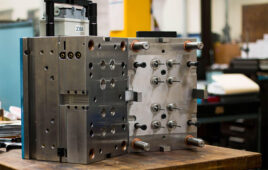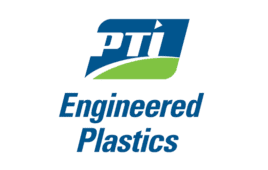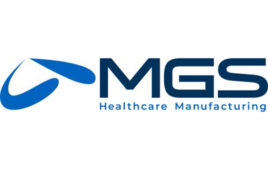Bioabsorbable material can be a nightmare to mold into tiny parts. But the process is manageable when the tool is properly designed.
Lindsay Mann, MTD Micro Molding
 Bioabsorbable materials could be one of the great medical developments of the early 21st century. The material is moldable, and while it’s doing its job inside the human body, it’s slowly absorbed so as to leave no trace after some required period. Its downside is that it can be a dickens to properly micromold.
Bioabsorbable materials could be one of the great medical developments of the early 21st century. The material is moldable, and while it’s doing its job inside the human body, it’s slowly absorbed so as to leave no trace after some required period. Its downside is that it can be a dickens to properly micromold.
Because many bioabsorbable fixation components are intended to stay in the body for six to nine months, it’s crucial that during the molding process the parts experience minimal and consistent inherent viscosity (IV) loss. This can be difficult to accomplish because the critical molding parameters such as temperature and pressure involved in processing these resins can severely degrade the material, which can directly affect the absorption rate of the product in the body.
Even a micromolder with the equipment to work with a particular material may have trouble delivering a consistent product with controlled IV loss for each molding run when they are unfamiliar with the material’s complexities. On-site testing capabilities for IV and Differential Scanning Calorimetry (DSC) allow determining the impact of process variables on the outputs so they can be adjusted immediately. This further allows for a minimal and consistent IV loss and to optimize the molding process.
Consider an OEM that developed the concept for a bioabsorbable fixation suture that generated excitement and positive comments from reviewing surgeons. Although the company worked with a reputable molder, after five years of labor, the molder had limited success and could not produce the part represented in its drawing with sufficient quality. The molder was seeing about 30% IV loss with inconsistent results.
To assess the part’s function, a secondary operation was required to heat and bend the part to a final orientation. However, this secondary process sacrificed further IV loss and introduced stresses into the product, causing more inconsistency which unfortunately leads to unreliable test results, preventing a successful proof of concept.
When the OEM tallied its losses − one year delayed market entry, loss of potential sales, time unnecessarily spent developing and validating secondary operations, the cost of restarting with new molder – the sum came to about $1.5 million. Enough was enough. After about five years, the OEM decided to try another molder and came to our company.
One of the first steps taken here was to create a custom tool. With a design so complex, it took about two months to design the mold – much longer than the usual one week. In many micromolds, and even in macromolds, side action movement is required to provide part-ejection clearance, about 0.125 in., between the steel and molded part. But for this mold to work, tooling designers were only left with 0.001 in. per side of clearance due to the part’s extremely complex geometry. Limitations included the cross section thickness of the part and an area that limited the side movement. Creative side-action techniques were used to accomplish proper part ejection from the tool.
Another change was to guide the OEM through material characterization. While bioabsorbable materials are relatively new, there is some allowable latitude in their composition. For example, it can be reinforced with fillers and made to flow easier with other additives. Even the time it takes for absorption is adjustable.
Having developed the unique concept mold to reduce secondary operations, the parts achieved minimal and consistent IV loss, and are much more consistent shot to shot. This confidence in the repeatability of the design’s function allows for reliable testing and a successful proof of concept.
For success with a bioabsorbable part, we suggest these tips for working with molders:
- Involve the micro molder as early in the project as possible.
- Involve the molder when selecting the material.
- Lean on your expert molder and their knowledge of materials, processing, strategy, techniques, and development requirements to get the best outcome possible in the least amount of time.
- Understand the requirements of your part in terms of consistency and control. The two characteristics most important to OEMs with bioresorbable products are consistency and control. Consistency refers to the achieving the same percentage of IV loss from shot to shot. The actual percent figure is slightly less important. Control refers to a molder’s capability. Ideally, one should have in-house processes and equipment to support the development and measurements of the molded bioabsorbable part.
If the part is to be optimized and improved, it is imperative for a molder to have a means for establishing a baseline on bioabsorbable-part quality and the equipment for internal testing, such as IV and DSC.
Lindsay Mann is director of marketing at MTD Micro Molding (Charlton, Mass.).
[Want to stay more on top of MDO content? Subscribe to our weekly e-newsletter.]







